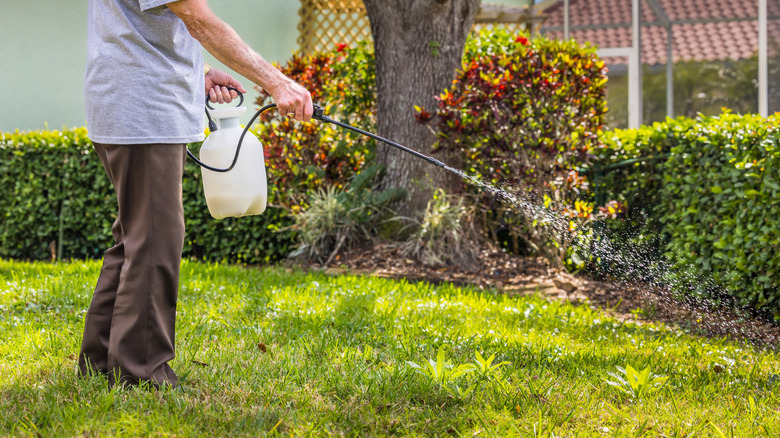The Real Reason Preemergent Isn't Working In Your Lawn
Maintaining a healthy lawn delivers year-round work that requires regular mowing, fertilizing, and weed control. It's this last point that can often present issues for both novice and experienced individuals alike. If you're like many people, you may have applied preemergent herbicides on your lawn in an attempt to get rid of weeds and help prevent new ones from coming back next season. While these products can indeed be effective in your lawn care arsenal, preemergent weed prevention does not kill existing weeds. Such herbicides also won't work if you apply them at the wrong time of the year.
When considering commercial herbicides, you will generally see two classes of weed killers: preemergent and postemergent products. As their names indicate, preemergent herbicides are designed to target weeds before they have the opportunity to emerge from seedlings. They also defend best against annual weeds, rather than biennial or perennial species. On the other hand, postemergent herbicides are best suited for weeds that have already sprouted and spread throughout your lawn. These products also target different parts of the unwanted plants. While postemergent herbicides kill weeds via leaf absorption, preemergent products target roots and shoots. Since your lawn's weed killer treatment doesn't last permanently, you might need to use both types of products each year. Knowing the key differences between these two types of products will help ensure the overall success of preemergent herbicide use in your lawn. Still, there are some other factors you'll need to consider to get the best results.
The best time to apply preemergent herbicides to your lawn
If you've applied preemergent herbicides to your lawn recently but are still seeing weeds, there may be a few explanations. First, it's important to understand that preemergent weed killers can only work on seeds that have already started to germinate, tackling the weed from the shoot rather than the leaves. Knowing the types of weeds you get in your yard each year is a good first step toward determining when you can expect them to germinate and applying preemergent herbicide accordingly.
While the exact timing can vary based on weed type as well as where you live, you can generally plan on applying preemergent weed killers to your lawn in the spring to help control crabgrass, sandbur, and other annual weeds. Wait until the soil temperature reaches 55 degrees Fahrenheit before application. If you have problems with winter weeds, your lawn might require an additional application in the fall, too. Keep in mind that these guidelines are also intended for lawns that are already established, and not those you plan on seeding — preemergent does not discriminate between grass and weed seed.
It's also important to read product labels carefully to ensure you have the right preemergence herbicide for the weeds you're wanting to get a handle on. Follow all manufacturer instructions to ensure an effective, but safe application process. Also, applying preemergent is only half the battle to a healthier lawn, and is usually considered a last resort. An occasional weed here and there is not considered a problem for an otherwise healthy grass lawn. Hand-pulling weeds is often a better option for isolated weed issues.

